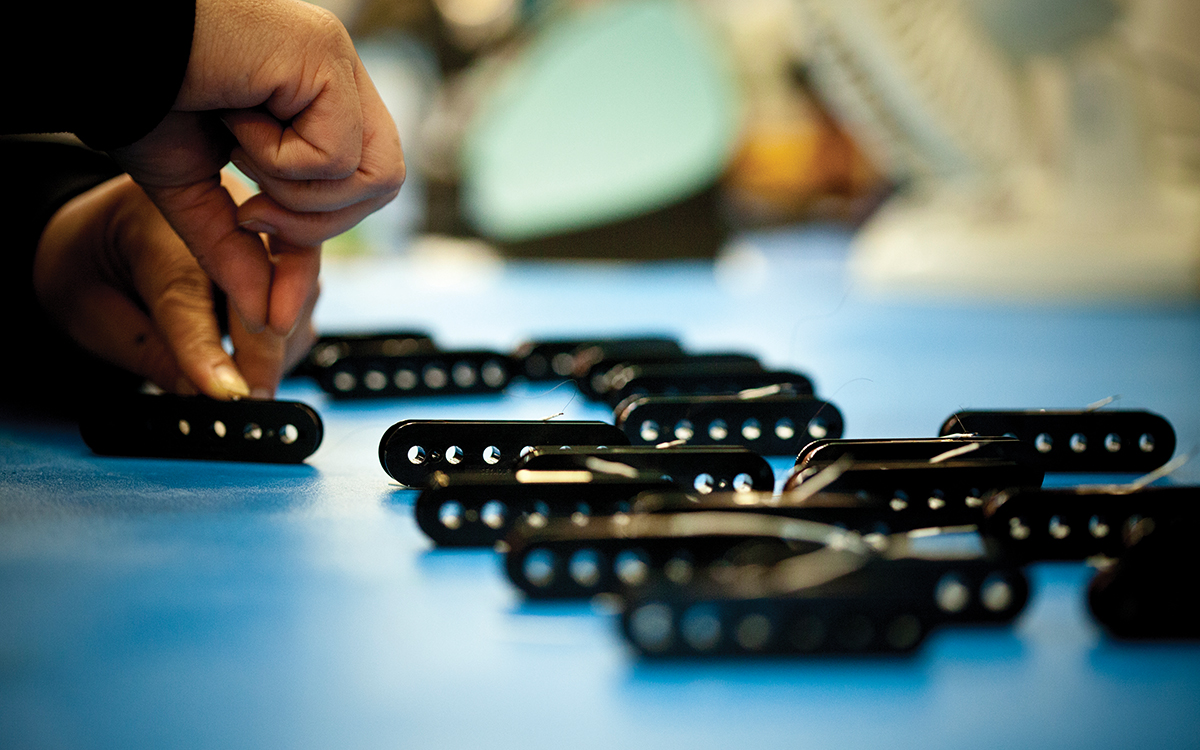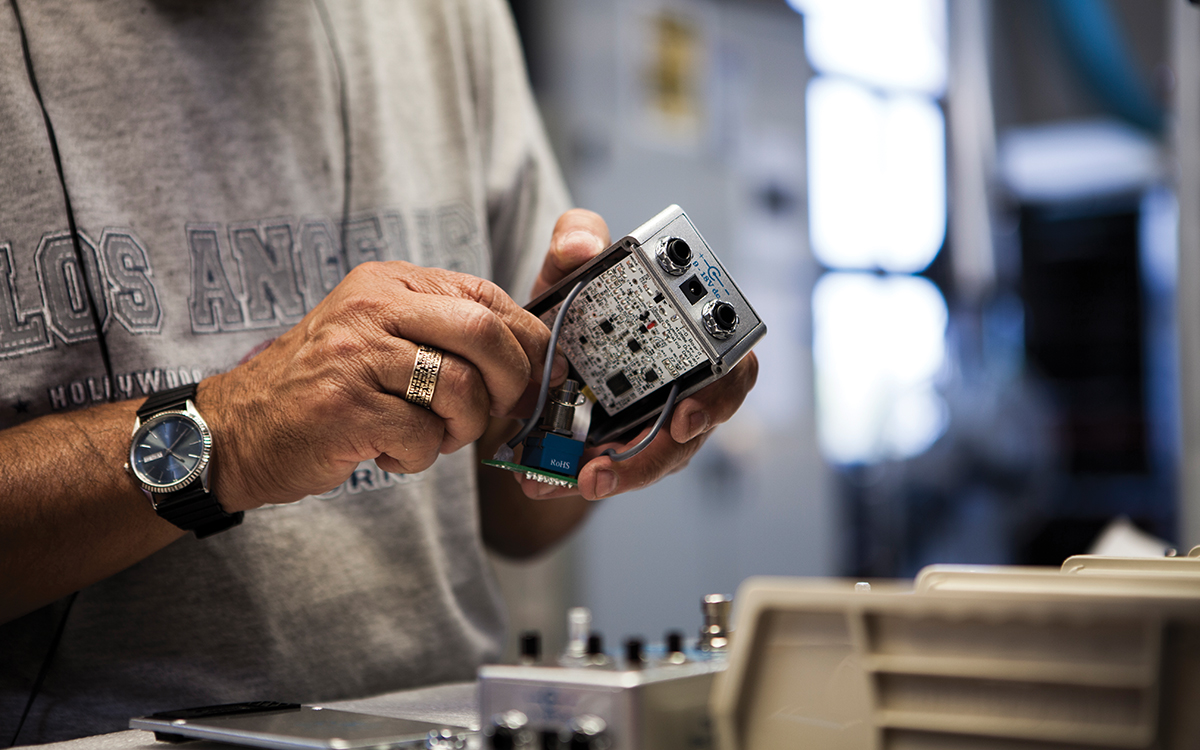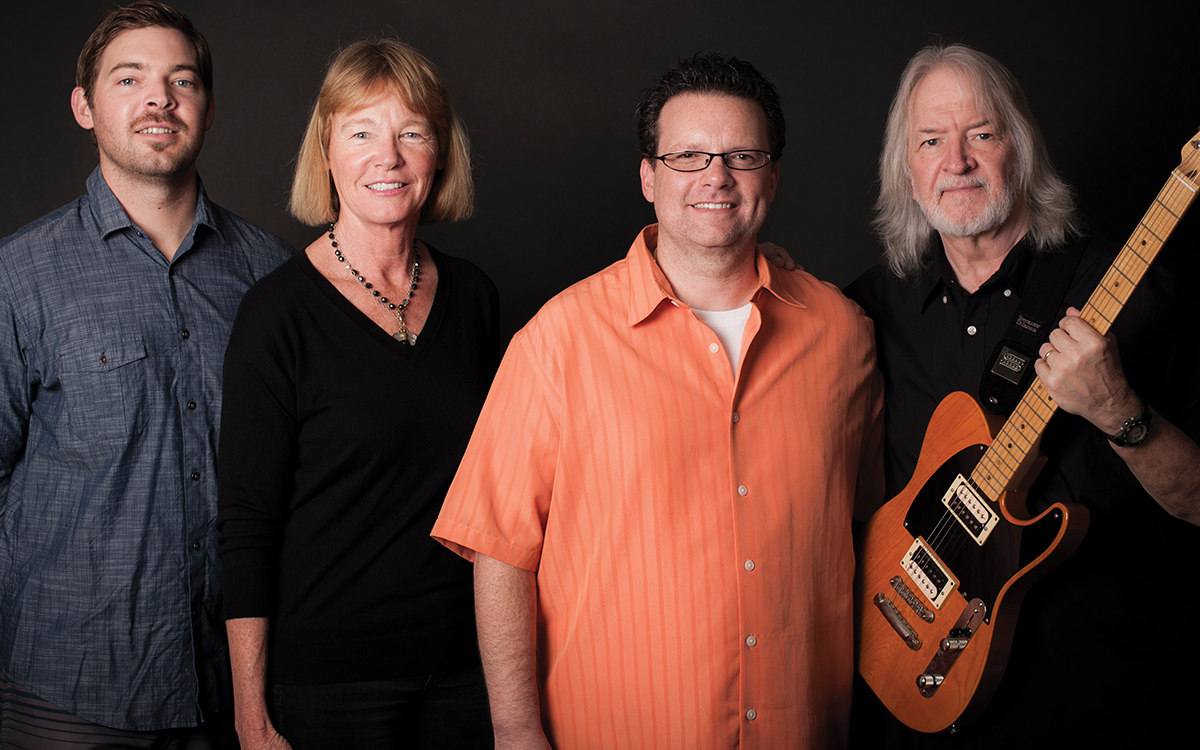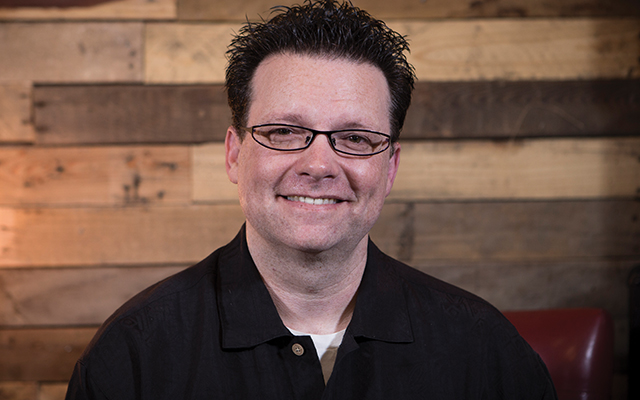If anyone could be said to epitomize the best elements of the music business, Seymour Duncan’s Max Gutnik would have a strong case for the distinction. Not only does he have years of experience as a recording artist and an impressive industry résumé—it includes Guitar Center, Sweetwater, Apogee, Avid and Line 6—but he also has a passionate commitment to the brick-and-mortar dealer channel, as well as for cultivating the next generation of music makers. At Seymour Duncan, where he is Senior Vice President of Products and Chief Revenue Officer, he’s found the perfect setting to merge his technical expertise, passion for music, affinity for the guitar and knowledge of in-store music retailing, all while contributing to a brand whose legacy is among the music products industry’s truly elite.
Join my conversation with Max Gutnik, and learn about a person who’s dedicated his life to the pursuit of amazing sound.

A peek at Seymour Duncan pickup production.
The Music & Sound Retailer: Tell me about how you initially became interested in, and passionate about, music and technology.
Max Gutnik: I started playing guitar as a kid, and I became passionate about it immediately. I attended a high school for the performing arts, focusing on music, and I moved to Los Angeles CA to attend Musicians Institute. From there, I ended up on the road with a band, touring and recording for a little over a decade. As a recording artist, I discovered a passion for technology. I remember the first time I saw ProTools, when we were recording our first record, and I got really into it…specifically, discovering ways to create and capture music that sounded better than others, and why. My pursuit of great tone, as well as great outcomes in the studio and on stage, is really what drove my thirst for knowledge.
The Retailer: How did you get your start in the conventional workforce? Tell me about your career trajectory.
Gutnik: After years on the road, the band and the music industry were changing. I was a little older, and I didn’t want to be on the road full time. It was almost nonstop. My first conventional gig started at Sweetwater Sound in tech support. I was able to translate my experience performing and recording to helping others. Eventually, I went back out to L.A. and I took a job managing the pro-audio department at Guitar Center Hollywood. We focused on selling digital audio workstations and live rigs with great-sounding outboard gear, teaching folks what mattered in the pursuit of great sound quality.
At the time, I was really big into Apogee converters. I sold a lot of them and, ultimately, I ended up working there. At first, I ran sales, then marketing and then, finally, I started doing product design. As a musician and recording artist, I had an intimate understanding of what the market needed and what people like me wanted. I designed some products that did well in the market, which led me to my next gig, running the ProTools product team at Avid. It was a great experience, and we came out with some amazing products.
I began to feel a little distanced from my guitar. So, when I had the opportunity to go to Line 6, I took it. I got to combine my understanding of the digital audio world with workflows that guitar players really needed at the pro level. Helix was a really massive project. We were merging all the technologies that Line 6 has helped develop into kind of a form factor and workflow for guitar players who are playing professionally, and who have a certain expectation for sound quality and functionality. But, at the same time, we were able to create this intuitive ease of use that hadn’t previously existed in the high-end guitar space.
As far as my path to Seymour Duncan? I grew up admiring them. Duncan was one of those classic aspirational brands, like Fender or Marshall. When you check that box as a guitar player, you feel like you’ve arrived. The first set of Hot Rails or the JB that you buy makes you feel like, “Wow…I actually have great tone coming out of my guitar!” It’s a big deal.
Needless to say, when they called, I jumped at the opportunity to go there. For 40 years, Seymour Duncan has been an innovative company beyond just pickups. The convertible amps and some of the early pedals were way ahead of their time. More importantly, Seymour Duncan has really helped define great tone for guitar players, both live and in the studio. Being able to merge my experience and background with the folks here has been really exciting.

A snapshot of pedal production at Seymour Duncan.
The Retailer: Discuss your key contributions, responsibilities and achievements during your tenure with Seymour Duncan.
Gutnik: Everything I’ve learned as a guitar player and working musician, as well as my experience in retail and pro audio, has had an impact. I think my skills and experience have been a good complement to the great team we have here.
Perhaps the biggest impact has been on the product side. We want to design products that solve problems and inspire creativity. We ask lots of questions. Instead of “What can we do?”, we ask, “What should we be doing?”
This has had a huge impact on our pedal business. We’re really focused on trying to bring innovation that’s meaningful to players. The first pedal I worked on at Duncan was the Catalina Dynamic Chorus. Chorus is a great effect that, often, can be too much of a good thing. So, we came up with the Dynamic Expression feature, which enables you to regulate the effect level, based on your playing dynamics. This solves a huge problem, and it makes the pedal a creative tool unlike any other.
Our Palladium Gain Stage pedal changes what’s possible from just your pedal board. Historically, the problem with getting your tone from pedals is their two-dimensional, kind-of-boxy sound and feel. Pedals traditionally don’t react like an amp, and that compromise is hard for players. With Palladium, we asked, “Can we design something that reacts, sounds and feels like a really great sounding tube amp?” The answer was yes.
After launching Palladium, we felt there was finally a real amp-in-a-box solution for players to take advantage of. Still, guitar players who used Palladium were in need of an amp to provide power and a clean channel. So, we thought, what if we took some of the design innovations we used to create Palladium’s reactive, amp-like qualities and applied that to a power amp that was powerful enough to drive your live rig, yet small enough to live comfortably on your pedal board?
That idea became PowerStage, Seymour Duncan’s first new amp in more than 20 years. PowerStage is going to change the way guitar players think about their rigs, and it’ll bring a much-needed solution to the market.
On the pickup side, we just introduced Duality, a new active pickup architecture, designed to solve the problems of too much compression and not enough dynamics or versatility in active pickups. We created a completely new architecture. The tone is versatile enough for many different styles of play. The design also lets us change the winding, magnets, tension…just like voicing a passive pickup. You can also choose any style: black, zebra, nickel gold. And, they sound amazing.
With the Saturday Night Special pickups, we’d heard from customers that they really wanted that classic rock, ’70s sound. But what we’re really hearing on the record is what the engineers were doing to the guitars and the amps in the ’70s. When you hear a Skynyrd record, you’re hearing a Skynyrd record in the studio. So, the question became “Can we make a pickup that captures that authenticity all the way through the signal chain?” That’s how the Saturday Night Special was born.
Those are a few of the achievements we’ve had on the product side.

Seymour Duncan’s engineering expertise has cemented the brand’s enviable reputation among serious musicians.
The Retailer: We’ve discussed what you’ve brought to Seymour Duncan, but what has Seymour Duncan brought to you? What motivates, inspires and engages you?
Gutnik: First and foremost, it’s the people at Seymour Duncan. We have such a great team here. I work for Cathy Duncan, Co-Founder and CEO of the company. Seymour and she are amazing. The perspective and passion they have—not to mention the culture they’ve created at the company for musicians—are real and authentic in a way that I’ve never before experienced in my career. It’s the first place I’ve ever been where the pressures to put out a product “on time” are trumped by our asking, “Are we doing the best thing for the customer at all times?”
As for Seymour…this is a man who wound pickups for Jimi Hendrix back in 1968! His love for guitar, guitarists, tone—we’re like kindred spirits. I get so much satisfaction from being able to relate to them and the rest of the Duncan team: those who have been here for 35-plus years, and those who have just joined the company.
It’s all about meaningful and lasting contributions to our industry; that’s what’s important. Everyone at Seymour Duncan lives and breathes that commitment. The company has provided a space for us to be truly creative and do great things for our customers.

(L-R): Derek Duncan, Cathy Carter Duncan, Max Gutnik and Seymour Duncan.
The Retailer: Give our brick-and-mortar-dealer readers insight into Seymour Duncan’s commitment to selling through the dealer channel, as opposed to focusing on direct-to-consumer sales. To what extent is a firm commitment to the dealer channel a fundamental part of Seymour Duncan’s core approach to business?
Gutnik: Working with our channel partners is the core, fundamental approach to our business. We still believe that products like pickups and pedals are ultimately experiential products. The more customers can walk in the door of a music store, sit down with a guitar, and hear and feel the difference our products make, the better.
The Retailer: Do you have any suggestions you’d offer to the brick-and-mortar dealers who are reading this interview…ideas that you think would help them bolster their business? Do you have any constructive criticism for Seymour Duncan’s dealer partners?
Gutnik: I’ve worked for two of the biggest dealers in the country. Apart from those, when I first started teaching guitar, I worked at a little place—Academy of Music—in Menomonee Falls WI. The Owner would pull me out of my guitar lesson and have me play guitar for a young, budding guitar player, so they could really hear what that guitar could do. Ultimately, that is the magic I’m talking about. There’s still an experiential thing that has to happen to connect to guitar players, musicians and future musicians. And I think the more opportunity music stores give people to come in, experiment and experience the magic that can happen when you turn on an amp and hear a Les Paul or a Strat for the first time with distortion, the better. That’s powerful and impactful, and it’s really important.
We shouldn’t get so caught up in the expediency of one-click selling that we forget that. When you walk into an acoustic room, with wood everywhere, and that smell, and you get to sit down in a treated room and hear the shimmer of that guitar…that’s where the love connection happens. It’s not when you get it home to your bedroom. It’s the dream of what this could sound like.
There are ways in which you can try to replicate that experience online. There are great sales guys who are incredibly passionate about music at the online shops. They’re wonderful to talk to, and they have tons of content they can pass along. They do a really good job of that. And that serves a certain type of customer, too. Ultimately, we have to have both.
In both cases, as the average age of guitar players keeps getting higher, we need to start really thinking about how we’re going to incentivize people to put down their Xbox controller and pick up an instrument. I believe it’s the dealers and companies like us that share the burden of inspiring, nurturing and stewarding the next generation of players.
The Retailer: What can company watchers expect from Seymour Duncan over the next one, three or five years?
Gutnik: Like I said, we’re trying to anticipate what the market needs and wants, and seeing what we have that uniquely qualifies us to solve some of those problems for musicians and guitar players. At the NAMM Show, we announced our first digital delay pedal in a decade. We believe we’re bringing a lot of cool, needed utility and sound quality to that in a way that’s intuitive and easy for guys to use. Hopefully, it’ll inspire them in certain ways. So, we’re going to continue along those lines, both in the analog and digital domains.
In addition, what we’re doing to solve problems for people who are getting tone from pedals and modelers is exciting. PowerStage comes in two models. There’s a 170-watt power amp that sits on your pedal board and provides clean tone and EQ. We’ll also have a 700-watt stereo version that can be rackmounted or just set on top of your cabinet. Both are voiced specifically for guitarists. Those are solutions to a problem that just hadn’t previously been solved.
Our dealers are very excited. We’ve heard them say that we’re the ones who finally got it right…that this is what customers have been asking for. Because of the heritage and the expertise at Seymour Duncan, we’re uniquely positioned to fill those gaps going forward, and we’ll serve the market in exciting ways.
The Retailer: Is there anything I’ve forgotten to ask?
Gutnik: One thing I do want to say—and I touched on it when talking about dealers—is that we, as an industry, have to recognize that the business has changed. There are more distractions and opportunities for people to engage in activities other than music. That puts our industry at risk. If we don’t have young musicians or young students of music, then we won’t have an industry in the future. There are a few aspects to this. One is that attention spans are continuing to decline. Kids have less patience to go sit down and practice guitar. Even my own kids! It’s really challenging to get my sons to want to sit down and practice. I have to find very creative ways to incentivize them.
We no longer have a record business that’s effectively able to do artist development the way it did in the past.
I think there’s an opportunity for us, as an industry, to take on the mantle of creating an environment to promote, develop and incentivize young, up-and-coming musicians to stay with it and seek those rewards. We have to remind kids that this is still a really cool adventure to go on.
At Seymour Duncan, our contribution is creating products that inspire musicians to pick up their instruments and make great music. Ultimately, that’s the goal, right? Great music, great musicians and great-sounding gear.


